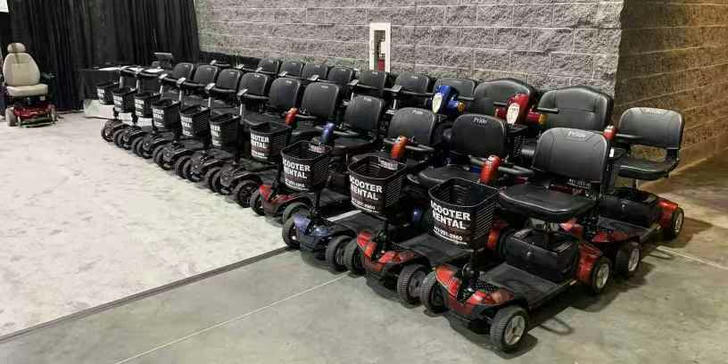How to get a nearly free mobility scooter?
As we age, maintaining mobility becomes increasingly difficult, especially for those with physical limitations or medical conditions. Fortunately, various programs and organizations provide free or low-cost mobility scooters that greatly improve their quality of life. In the United States, there are multiple government and nonprofit programs that can help low-income families, especially those with disabilities, obtain mobility vehicles.

1. California's Driving Clean Assistance Program (DCAP)
Overview: This program offers financial assistance to low-income Californians for purchasing zero-emission vehicles.
Benefits: Eligible participants can receive up to $12,000 for scrapping an older vehicle and purchasing a new or used zero-emission vehicle, plus an additional $2,000 for electric charging costs.
Eligibility: Applicants must be at or below 300% of the federal poverty level. The program aims to ensure that low-income residents have access to clean transportation options.
2. State and Local Programs
Various states have programs that provide financial assistance or grants for wheelchair-accessible vehicles or modifications:
Kentucky: The Spina Bifida Foundation offers funding for adapting vehicles.
New York: The Motion Project Foundation provides grants for vehicle modifications.
Texas: The Houston Children’s Charity has a program called "Chariots for Children" that awards accessible vehicles to families of children with special needs.
3. Veterans Affairs Benefits
Eligible veterans can receive grants for purchasing or modifying vehicles through the U.S. Department of Veterans Affairs. This includes funding for wheelchair-accessible vans.
4. Transportation for Elderly Persons and Persons with Disabilities Program
Administered by the U.S. Department of Transportation, this program provides grants to states to coordinate transportation services for seniors and individuals with disabilities. While it does not directly provide vehicles, it supports transportation services that may include accessible options.
5. Nonprofit Organizations
Many nonprofit organizations offer grants or funding assistance for mobility vehicles:
Bridge to Mobility: Provides grants specifically for wheelchair-accessible vehicles.
Special Kids Fund: Offers financial assistance to families demonstrating financial need for a vehicle.
National Organization for Vehicle Accessibility: Provides grants based on financial need for accessible vans and equipment.
How to Apply for a Free Elderly Mobility Vehicle
If you or someone you know could benefit from a free mobility vehicle, there are several avenues to explore:
Veterans Affairs (VA): Veterans with service-related disabilities should check with the VA for eligibility. The VA often covers the cost of mobility devices for qualified veterans.
Medicare: Seniors with a prescription for a mobility device can apply through Medicare, which may cover a significant portion of the cost. Additional support from non-profits can help cover the remaining expenses.
Non-Profit Organizations: Numerous charities provide free mobility devices to seniors in need. Applications are often simple and require basic information about the applicant's situation.
Community Fundraising: In cases where official channels are unavailable, community fundraising can be an effective way to raise funds for a mobility vehicle. Family, friends, and local charities can help organize these efforts.
Manufacturer Programs: Some mobility device manufacturers offer special programs for low-income seniors, providing refurbished or discounted devices. It's worth checking directly with manufacturers like Pride Mobility to see if you qualify.
Conclusion
Gaining access to a free or low-cost mobility vehicle can be life-changing for seniors, offering them the freedom to move independently and engage with their communities. Whether through government programs, non-profits, community efforts, or manufacturer donations, there are several options available. These real-life examples demonstrate that with the right resources and determination, seniors can secure the mobility assistance they need without the financial burden.
